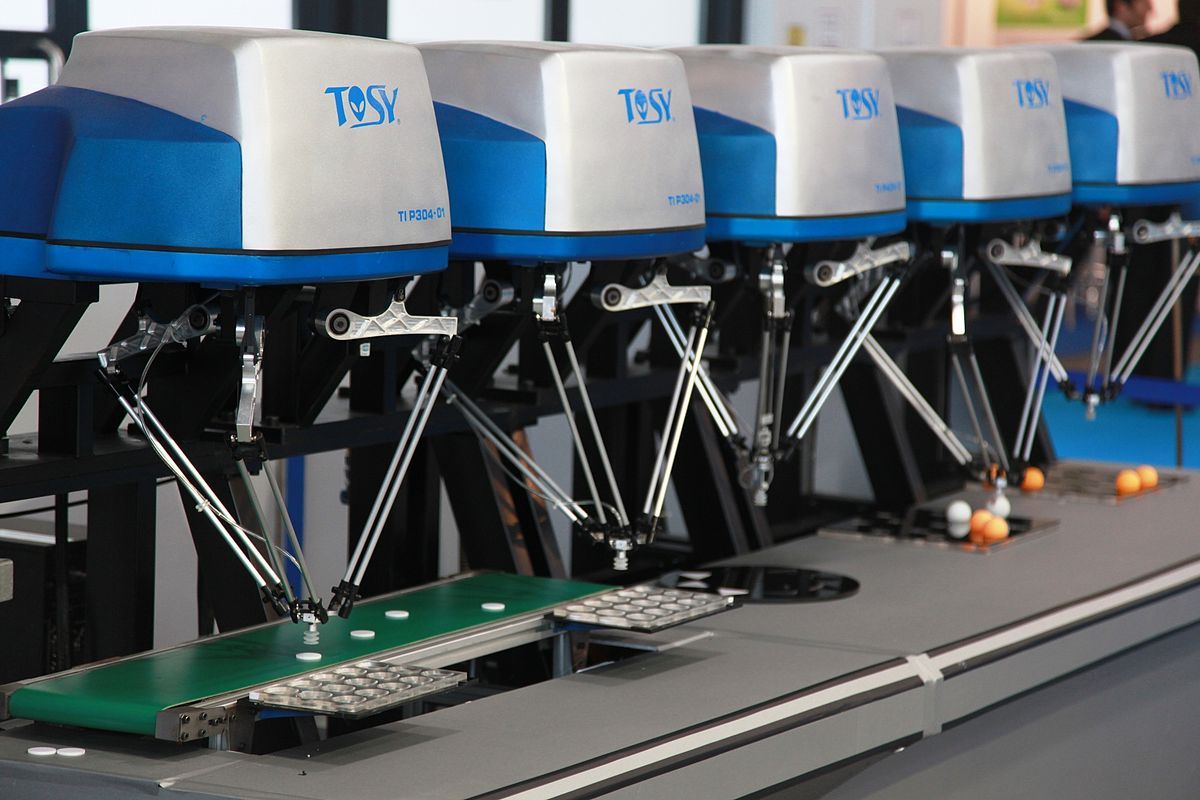
Delta robots are fascinating machines that have revolutionized various industries with their speed and precision. But what exactly makes them so special? These robots, known for their unique parallel arm design, can perform tasks with incredible accuracy and swiftness. Invented by Professor Reymond Clavel in the 1980s, Delta robots have become essential in fields like packaging, medical devices, and even 3D printing. Their ability to handle delicate objects without damage makes them invaluable in many applications. Want to know more about these amazing robots? Here are 25 intriguing facts that highlight the capabilities and history of Delta robots.
What Are Delta Robots?
Delta robots are fascinating machines designed for high-speed and precise tasks. They have a unique structure that sets them apart from other robots. Here are some intriguing facts about these remarkable devices.
-
Delta robots were invented by a professor named Reymond Clavel in the 1980s at the École Polytechnique Fédérale de Lausanne (EPFL) in Switzerland.
-
These robots are known for their parallel-arm design, which allows for rapid and precise movements.
-
Delta robots are often used in the packaging industry due to their speed and accuracy.
-
They can perform up to 300 picks per minute, making them incredibly efficient for repetitive tasks.
How Do Delta Robots Work?
Understanding the mechanics behind Delta robots can be quite fascinating. Their unique design and functionality make them stand out.
-
Delta robots use three or more arms connected to universal joints at the base.
-
The arms are connected to a single end effector, which moves in a dome-shaped workspace.
-
The parallel arm configuration allows for high-speed and precise movements, ideal for tasks like sorting and assembling.
-
Delta robots are controlled by sophisticated software that ensures accuracy and efficiency in their operations.
Applications of Delta Robots
Delta robots are versatile and find applications in various industries. Their speed and precision make them suitable for numerous tasks.
-
In the food industry, Delta robots are used for tasks like picking and placing items on conveyor belts.
-
They are also employed in the pharmaceutical industry for packaging medicines and other products.
-
Delta robots are used in the electronics industry for assembling small components.
-
They play a crucial role in the automotive industry for tasks like assembling small parts and components.
Advantages of Delta Robots
Delta robots offer several benefits that make them a preferred choice in many industries. Their unique design and capabilities provide numerous advantages.
-
Delta robots are incredibly fast, which increases productivity in various applications.
-
Their precision ensures that tasks are performed accurately, reducing errors and waste.
-
The parallel-arm design allows for a large workspace, making them versatile for different tasks.
-
Delta robots are relatively easy to program and integrate into existing systems.
Challenges Faced by Delta Robots
Despite their many advantages, Delta robots also face certain challenges. Understanding these can help in optimizing their use.
-
Delta robots can be expensive to purchase and maintain, which may be a barrier for small businesses.
-
They require a stable and controlled environment to operate efficiently.
-
The complexity of their design can make repairs and maintenance more challenging.
-
Delta robots may not be suitable for tasks that require heavy lifting or handling large objects.
Future of Delta Robots
The future of Delta robots looks promising with advancements in technology. Innovations are continually improving their capabilities and applications.
-
Researchers are working on enhancing the speed and precision of Delta robots even further.
-
Integration with artificial intelligence (AI) is expected to make Delta robots smarter and more autonomous.
-
Advances in materials science may lead to lighter and more durable Delta robot components.
-
The development of more user-friendly programming interfaces will make Delta robots accessible to a broader range of industries.
-
As technology evolves, Delta robots will likely find new applications in emerging fields such as biotechnology and advanced manufacturing.
The Fascinating World of Delta Robots
Delta robots are truly remarkable. Their speed, precision, and versatility make them indispensable in various industries. From assembling electronics to packaging food, these robots handle tasks that require both delicacy and efficiency. Their unique design, with three arms connected to universal joints at the base, allows for rapid and accurate movements. This makes them perfect for repetitive tasks that demand high precision.
Moreover, advancements in technology continue to enhance their capabilities, making them even more reliable and efficient. As industries evolve, the role of Delta robots will likely expand, bringing even more innovative applications. Understanding these robots not only highlights the marvels of modern engineering but also underscores the importance of automation in our daily lives. So, next time you see a perfectly packaged product or a swiftly assembled gadget, remember the Delta robots working tirelessly behind the scenes.
Was this page helpful?
Our commitment to delivering trustworthy and engaging content is at the heart of what we do. Each fact on our site is contributed by real users like you, bringing a wealth of diverse insights and information. To ensure the highest standards of accuracy and reliability, our dedicated editors meticulously review each submission. This process guarantees that the facts we share are not only fascinating but also credible. Trust in our commitment to quality and authenticity as you explore and learn with us.
